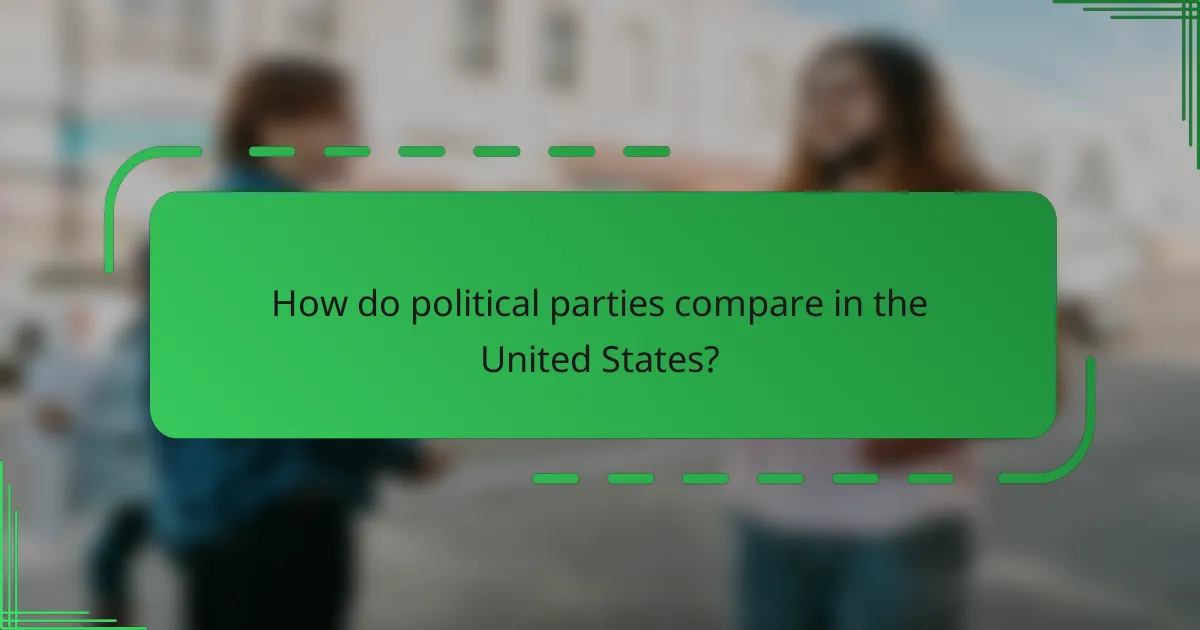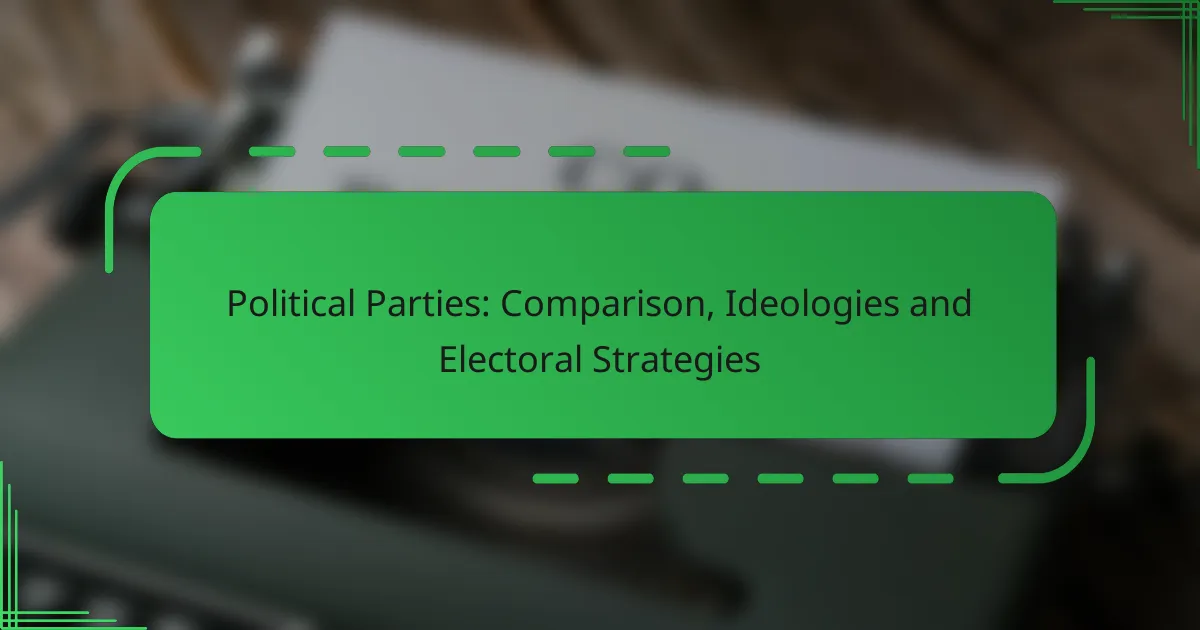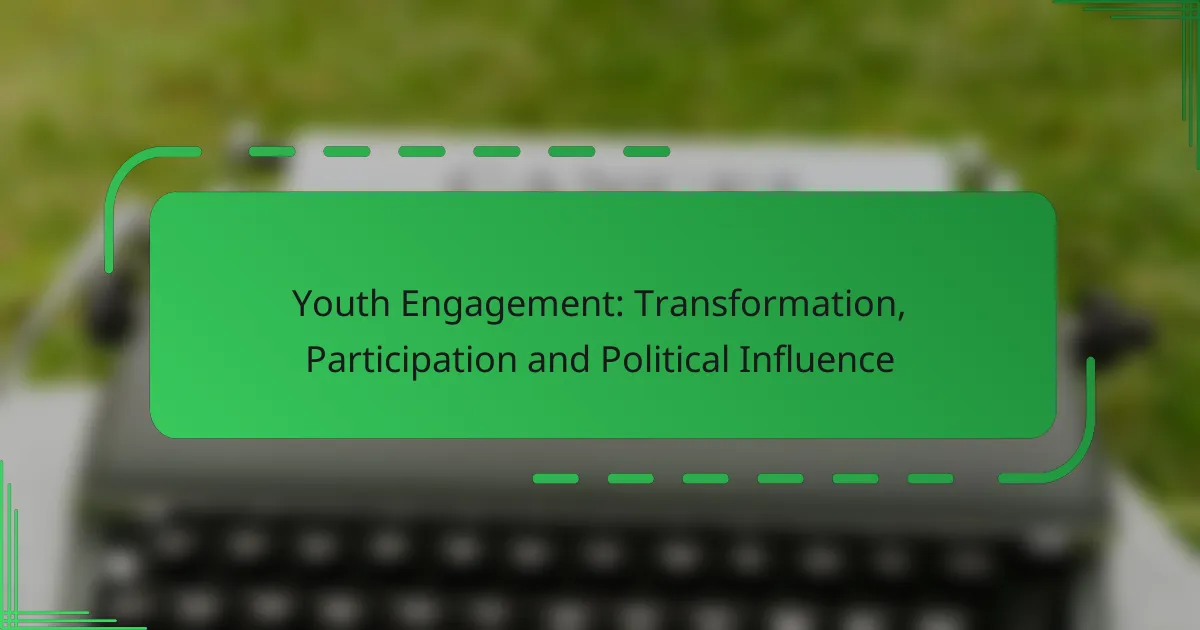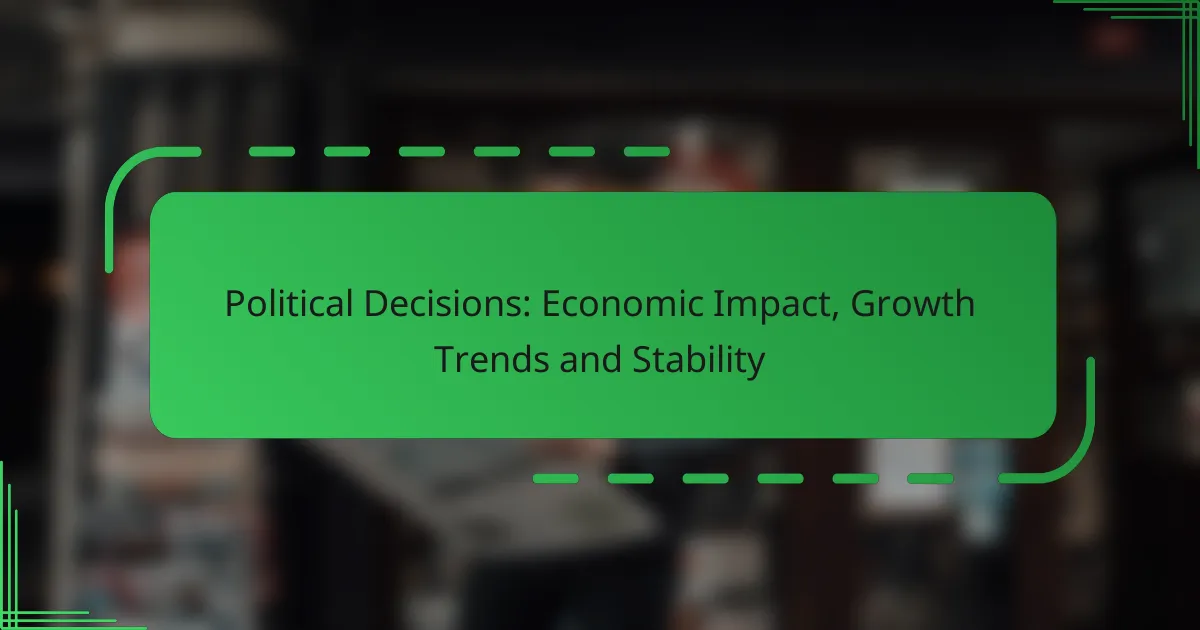Political parties play a pivotal role in shaping the political landscape, particularly in the United States, where the Democratic and Republican parties dominate. Their distinct ideologies, such as conservatism and liberalism, inform their policies and electoral strategies, influencing voter engagement and governance. Additionally, parties utilize various tactics, including voter mobilization and social media outreach, to enhance their electoral success.

How do political parties compare in the United States?
Political parties in the United States primarily consist of the Democratic Party and the Republican Party, which dominate the political landscape. These parties differ significantly in their ideologies, electoral strategies, and regional support, influencing how they engage with voters and shape policy.
Democratic Party vs Republican Party
The Democratic Party generally advocates for social equality, environmental protection, and government intervention in the economy. In contrast, the Republican Party emphasizes individual liberties, free-market principles, and limited government. These ideological differences manifest in their respective platforms and policy proposals.
For instance, Democrats often support higher taxes on the wealthy to fund social programs, while Republicans typically favor tax cuts to stimulate economic growth. Voter demographics also differ, with Democrats attracting urban voters and minorities, whereas Republicans tend to have stronger support in rural areas and among white voters.
Third parties like Libertarian Party
Third parties, such as the Libertarian Party, offer alternative ideologies that challenge the two-party system. The Libertarian Party promotes civil liberties, non-interventionist foreign policies, and minimal government regulation. While they have not won significant offices, they influence major party platforms by introducing new ideas.
Voters may consider third parties when they feel disillusioned with the mainstream options. However, the winner-takes-all electoral system often limits their impact, making it crucial for third-party candidates to build coalitions and appeal to broader audiences to gain traction.
Regional differences in party platforms
Regional differences significantly shape party platforms in the United States. For example, Democrats in the Northeast and West Coast often prioritize climate change and healthcare reform, while Southern Democrats may focus more on economic development and education. Conversely, Republicans in the Midwest may emphasize agricultural policies, whereas those in the South might prioritize social conservatism.
Understanding these regional nuances can help voters align with candidates who best reflect their values and concerns. Additionally, party strategies may adapt to local issues, making it essential for candidates to resonate with their constituents’ specific needs and preferences.

What are the main ideologies of political parties?
The main ideologies of political parties shape their policies and electoral strategies. These ideologies include conservatism, liberalism, and progressivism, each influencing the party’s approach to governance and societal issues.
Conservatism in the Republican Party
Conservatism within the Republican Party emphasizes limited government, individual liberties, and free-market principles. This ideology often advocates for lower taxes, reduced regulation, and a strong national defense.
Republicans typically prioritize traditional values and a strong emphasis on personal responsibility. For example, policies may focus on promoting family structures and community initiatives rather than extensive government programs.
Liberalism in the Democratic Party
Liberalism in the Democratic Party centers on social justice, equality, and the role of government in addressing societal issues. Democrats often support progressive taxation, universal healthcare, and environmental regulations to promote equity and sustainability.
This ideology encourages government intervention to protect civil rights and provide social services. For instance, initiatives may include expanding access to education and healthcare, reflecting a commitment to addressing systemic inequalities.
Progressivism in Green Party
Progressivism in the Green Party focuses on environmental sustainability, social justice, and grassroots democracy. This ideology advocates for policies that address climate change and promote ecological responsibility.
Green Party members often push for comprehensive reforms such as transitioning to renewable energy sources and implementing strict regulations on pollution. Their platform emphasizes the interconnectedness of social and environmental issues, aiming for a holistic approach to governance.

What electoral strategies do political parties use?
Political parties employ various electoral strategies to maximize their chances of winning elections. These strategies include voter mobilization techniques, campaign financing methods, and the use of social media, each playing a crucial role in shaping electoral outcomes.
Voter mobilization techniques
Voter mobilization techniques are essential for increasing turnout among supporters. Parties often use door-to-door canvassing, phone banking, and targeted outreach to engage potential voters. These methods can significantly enhance voter participation, particularly in local and midterm elections.
Additionally, parties may utilize data analytics to identify and prioritize key demographics, ensuring that their efforts are focused on groups most likely to support them. For instance, targeting young voters through college campuses can yield high engagement rates.
Campaign financing methods
Campaign financing is critical for sustaining electoral efforts and can come from various sources, including individual donations, political action committees (PACs), and party funds. In many countries, there are limits on contributions to ensure fair competition, which parties must navigate carefully.
Effective fundraising strategies often involve hosting events, leveraging online platforms for small donations, and building relationships with major donors. Transparency in financing is also vital, as voters increasingly demand accountability regarding how campaign funds are utilized.
Use of social media in elections
Social media has transformed electoral strategies by providing parties with direct channels to communicate with voters. Platforms like Facebook, Twitter, and Instagram allow for targeted advertising and real-time engagement, making it easier to mobilize supporters and disseminate campaign messages.
However, parties must be cautious about misinformation and the potential for negative backlash. Crafting authentic content that resonates with the audience is crucial, as is monitoring social media interactions to address concerns promptly. Utilizing analytics tools can help parties refine their strategies based on voter engagement metrics.

How do political parties adapt to changing demographics?
Political parties adapt to changing demographics by adjusting their platforms, outreach strategies, and messaging to resonate with diverse voter groups. This responsiveness is crucial for maintaining electoral relevance and securing support across various segments of the population.
Engagement with minority communities
Political parties increasingly prioritize engagement with minority communities to reflect their interests and concerns. This can involve targeted outreach efforts, such as community events, multilingual materials, and collaborations with local organizations to foster trust and participation.
Effective engagement often requires parties to understand the unique cultural and social dynamics within these communities. For instance, addressing specific issues like immigration reform or social justice can resonate more deeply than generic campaign messages.
Shifts in youth voter preferences
Political parties must recognize and adapt to the evolving preferences of younger voters, who often prioritize issues like climate change, social equity, and digital rights. Engaging with this demographic involves using platforms they frequent, such as social media, and addressing their concerns directly in campaign messaging.
To effectively attract youth voters, parties should consider incorporating innovative policies and demonstrating a commitment to change. This might include promoting sustainable practices or advocating for education reform, which are often top priorities for younger generations.

What are the challenges faced by political parties?
Political parties encounter several significant challenges that can hinder their effectiveness and influence. These include polarization, misinformation, and the need to adapt to changing voter demographics and preferences.
Polarization and partisanship
Polarization refers to the growing divide between political parties, leading to increased partisanship. This often results in a lack of cooperation and compromise, making it difficult for parties to address pressing issues effectively.
Partisan loyalty can also skew public perception, where voters may prioritize party affiliation over policy substance. This can lead to echo chambers, where individuals only engage with information that reinforces their existing beliefs.
Impact of misinformation
Misinformation poses a significant challenge for political parties, as false narratives can spread rapidly through social media and other channels. This can distort public understanding of policies and candidates, undermining informed decision-making.
Political parties must actively combat misinformation by promoting fact-checking initiatives and transparent communication. Engaging with voters through educational campaigns can help mitigate the effects of false information and foster a more informed electorate.

How do political parties influence policy-making?
Political parties play a crucial role in shaping policy-making by establishing legislative agendas, mobilizing voters, and forming coalitions. Their ideologies and electoral strategies directly impact the laws and regulations that govern society.
Legislative agendas
Legislative agendas are the prioritized lists of policies that political parties aim to implement. These agendas reflect the party’s core beliefs and the interests of their constituents, often influencing the direction of national and local legislation.
For example, a party with a strong focus on environmental issues may prioritize legislation related to renewable energy and climate change. In contrast, a party emphasizing economic growth might concentrate on tax reforms and business incentives. Understanding these agendas helps voters align their preferences with the party that best represents their interests.
When assessing a party’s legislative agenda, consider how it addresses current societal challenges and whether it proposes realistic solutions. Voters should look for clear commitments and timelines, as well as the potential for bipartisan support, which can enhance the likelihood of successful policy implementation.



